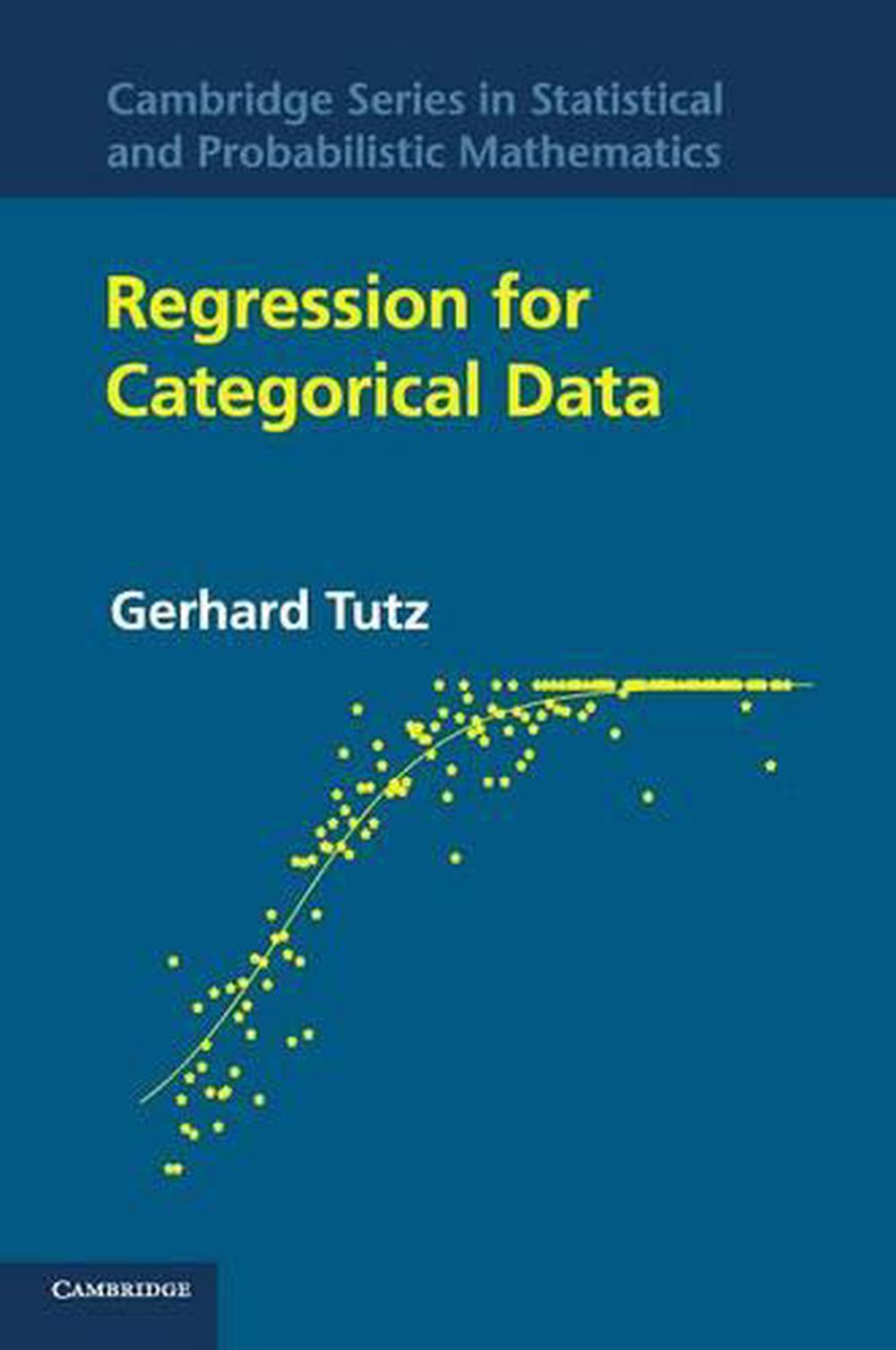
When you click on links to various merchants on this site and make a purchase, this can result in this site earning a commission. Affiliate programs and affiliations include, but are not limited to, the eBay Partner Network.
Regression for Categorical Data by Gerhard Tutz (English) Hardcover Book

- Item No : 388122162501
- Condition : Brand New
- Brand : No brand Info
- Seller : the_nile_uk_store
- Current Bid : US $154.65
-
* Item Description
-
The Nile on eBay

Regression for Categorical Data
by Gerhard Tutz
This book introduces basic and advanced concepts of categorical regression with a focus on the structuring constituents of regression and recent developments in flexible and high-dimensional regression. Among the topics treated are nonparametric regression; the hurdle model and zero-inflated regression models for count data; and non-standard tree-based ensemble methods.
FORMAT
HardcoverLANGUAGE
EnglishCONDITION
Brand New
Publisher Description
This book introduces basic and advanced concepts of categorical regression with a focus on the structuring constituents of regression, including regularization techniques to structure predictors. In addition to standard methods such as the logit and probit model and extensions to multivariate settings, the author presents more recent developments in flexible and high-dimensional regression, which allow weakening of assumptions on the structuring of the predictor and yield fits that are closer to the data. A generalized linear model is used as a unifying framework whenever possible in particular parametric models that are treated within this framework. Many topics not normally included in books on categorical data analysis are treated here, such as nonparametric regression; selection of predictors by regularized estimation procedures; ternative models like the hurdle model and zero-inflated regression models for count data; and non-standard tree-based ensemble methods. The book is accompanied by an R package that contains data sets and code for all the examples.
Author Biography
Dr Gerhard Tutz is a Professor of Mathematics in the Department of Statistics at Ludwig-Maximilians University, Munich. He is formerly a Professor at the Technical University Berlin. He is the author or co-author of nine books and more than 100 papers.
Table of Contents
1. Introduction; 2. Binary regression: the logit model; 3. Generalized linear models; 4. Modeling of binary data; 5. Alternative binary regression models; 6. Regularization and variable selection for parametric models; 7. Regression analysis of count data; 8. Multinomial response models; 9. Ordinal response models; 10. Semi- and nonparametric generalized regression; 11. Tree-based methods; 12. The analysis of contingency tables: log-linear and graphical models; 13. Multivariate response models; 14. Random effects models; 15. Prediction and classification; Appendix A. Distributions; Appendix B. Some basic tools; Appendix C. Constrained estimation; Appendix D. Kullback-Leibler distance and information-based criteria of model fit; Appendix E. Numerical integration and tools for random effects modeling.
Review
"Regression for Categorical Data is a well-written and nicely organized book. It focuses on the regression analysis of categorical data, including both binary and count data, and introduced up-to-date developments in the field."
Xia Wang, Mathematical ReviewsReview Quote
"Regression for Categorical Data is a well-written and nicely organized book. It focuses on the regression analysis of categorical data, including both binary and count data, and introduced up-to-date developments in the field." Xia Wang, Mathematical Reviews
Promotional "Headline"
The book treats many recent developments in flexible and high-dimensional regression not normally included in books on categorical data analysis.
Description for Bookstore
This book introduces basic and advanced concepts of categorical regression with a focus on the structuring constituents of regression and recent developments in flexible and high-dimensional regression. Among the topics treated are nonparametric regression; the hurdle model and zero-inflated regression models for count data; and non-standard tree-based ensemble methods.
Description for Library
This book introduces basic and advanced concepts of categorical regression with a focus on the structuring constituents of regression and recent developments in flexible and high-dimensional regression. Among the topics treated are nonparametric regression; the hurdle model and zero-inflated regression models for count data; and non-standard tree-based ensemble methods.
Details
ISBN1107009650Author Gerhard TutzPublisher Cambridge University PressSeries Cambridge Series in Statistical and Probabilistic MathematicsYear 2011ISBN-10 1107009650ISBN-13 9781107009653Format HardcoverImprint Cambridge University PressPlace of Publication CambridgeCountry of Publication United KingdomLanguage EnglishMedia BookDEWEY 519.536Short Title REGRESSION FOR CATEGORICAL DATPublication Date 2011-11-21Pages 572Series Number 34Affiliation Ludwig-Maximilians-Universitat MunchenPosition ProfessorIllustrations Worked examples or Exercises; 102 Tables, unspecified; 98 Line drawings, unspecifiedAudience Professional and ScholarlyAU Release Date 2011-11-21NZ Release Date 2011-11-21UK Release Date 2011-11-21


-
- The Lost Super Foods
- $ 37.00
- The Self-Sufficient Backyard
- $ 37.00
- A Navy Seals BUG IN GUIDE
- $ 39.00
- Childrens Books Phonics Lot 60
- $ 34.99
















